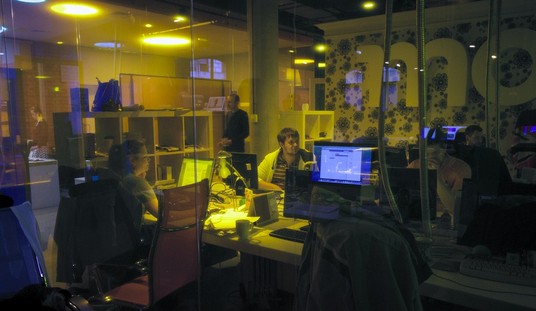America is parking a working spacecraft nose to nose with its prototype at the Smithsonian annex today. The shuttles that made space flight routine are officially retired. America has no means to put humans in space on our own.
I’ll never forget where I was in March 2002. After watching Space Shuttle Columbia launch at dawn from Kennedy Space Center, feeling the heat from her engines from three miles away as she lit up and vaulted toward the clouds, I and several of my colleagues from the Space Telescope Science Institute traveled to the Johnson Space Center in Texas to monitor the astronauts’ intricate mission. I was producing a documentary on the mission, which would be called Hubble Reborn and has been playing in museums large and small for a decade now. This was STS-109, or in the world of the Hubble Space Telescope to which I belonged, Servicing Mission 3B. The astronauts had one of the most difficult missions ever performed in space ahead of them: They had to shut Hubble down entirely for the first time since its launch from Discovery in 1990, and replace its power system. It was a delicate mission, with no guarantee that the most successful space-based research instrument ever built would be able to turn back on and function properly. Hubble would face a Lazarus moment, in the hands of some of America’s bravest flyers.
So one night that chilly March, my colleagues and I stepped away from our monitoring stations at JSC for a few moments, went outside, and looked up. The dark sky south of Houston was dotted with stars, and at the expected time, a new star appeared. It was by far the brightest dot in the sky, and it didn’t flicker. It moved across the entire sky in the span of a few minutes. It was the shuttle Columbia with Hubble attached, the combined reflectance of both dominating the night. We were seeing from the ground what would turn out to be Columbia’s final completed mission. Astronauts in low earth orbit were, at the moment we stood on the ground seeing them as a brilliant dot, hurtling along at 17,000 miles per hour working on Hubble’s deep systems.
Now, after Discovery is parked with Enterprise at the Smithsonian, America is truly out of the manned space flight business. We have the so-called private space ventures which I strongly support, but let’s be candid: As astronaut Gene Cernan notes, they’re government subsidized too. And they are decades behind what has already been achieved by NASA. If we’re depending on private space flight, we’re now far back in second place behind the Russians. Without manned space flight we cannot launch another Hubble if we wanted to. We cannot service the Hubble that is still up there making discovery after discovery. We cannot now get up to low earth orbit with humans at all. The space shuttle could go from dead stop to orbit in 8.5 minutes. After Discovery’s retirement we’re going in reverse and it will take years, maybe decades, just to get us back to where we were.
Today’s final moves of the Discovery are bittersweet. The workhorse shuttle deserves the rest that her sister ships Challenger and Columbia never got. The shuttle program that enabled humans to turn space into a workspace has run its course. But America has no viable plan to return to space anytime soon, and that’s both a tragedy and a blow to our nation’s security. We no longer command the highest ground around earth, and it’s fair to doubt whether we ever will slip the surly bonds of gravity, apathy, debt and politics again.









Join the conversation as a VIP Member